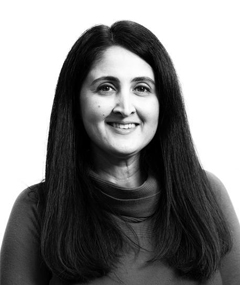As people around the world are discovering, journal writing is a way to learn about yourself and grow as a person. Journaling is a powerful method for acquiring self-knowledge. The solitary act of writing by hand creates an honest and powerful experience to learn things about yourself you never knew.
One such way to learn about yourself through journaling is active imagination. Active imagination is a new way you can write in your journal that will help you to discover more about yourself and to grow in various ways. Utilizing depth psychology, you can discover more about your dark side, your inner child, and your creativity.
What Is Active Imagination?
Active imagination is a technique by which unconscious contents are translated into images, narrative, or personified as a separate entity. The technique was developed by the Psychologist Carl Jung in the early 20th century. It uses various forms of self-expression to make unconscious desires, beliefs, and personality traits conscious.
The end product of active imagination can be anything. It may be drawing, painting, sculpture, dance, or even music. We are focusing on how you can use active imagination in your journal writing to create an impactful and productive effect on your life. For active imagination to work as it is intended too, you need to let go of any resistance. It is time to give a voice to parts of yourself that are normally not heard.
How To Use Active Imagination in Your Journaling
We are going to go over 5 steps for a beginner to use active imagination in your journaling.
Step 1
The first phase of active imagination is to just relax! You want to get out your journal and get in a focused, relaxed, almost meditative state. You want to set out twenty to forty minutes to just focus on yourself.
Step 2
Next, you choose something to concentrate on. This will be the subject you will be writing on. There are several things you can use as a subject for your active imagination. Choose something that has psychological depth for you. Carl Jung most often did Active Imagination with dreams. Using a recent dream as the focus-point of the practice. But you can use memories, archetypes, or even a mood.
“In the latter case you choose a dream, or some other fantasy-image, and concentrate on it by simply catching hold of it and looking at it. You can also use a bad mood as a starting-point, and then try to find out what sort of fantasy-image it will produce, or what image expresses this mood. You then fix this image in the mind by concentrating your attention. Usually it will alter, as the mere fact of contemplating it animates it. The alterations must be carefully noted down all the time, for they reflect the psychic processes in the unconscious background, which appear in the form of images consisting of conscious memory material. In this way conscious and unconscious are united, just as a waterfall connects above and below.” (Carl Jung: The Conjunction, CW 14, par. 706.)
Key Points:
- Choose a dream, an archetype, an emotion or feeling, or an image or symbol.
- Write it down at the top of your journal and begin concentrating on it and what it means to you.
Step 3
Now, you have a recent dream or meaningful image or feeling, and you want to begin taking deep, relaxing breaths. Focus on the dream, feeling, or image and let whatever thoughts arise rise. You want to just relax and do a small meditation looking at the top of your page where you wrote what you will be focusing on.
Start imagining what you wrote. If it is an image, just visualize it and see where your imagination takes you. If it is a feeling or word, imagine what that would look like if it were a visual? What would that emotion be if it were an image? You can even imagine a character and what they would say if you had a conversation.
We want to loosen our focus just enough for the “unconscious mind” to start to think and imagine other things related to this central theme or focus-point. We must not get too distracted and begin thinking about tasks we need to do or other unrelated, unimportant things!
Step 4
Now, you begin writing. You want to create an artifact of the images and thoughts that came to you. Write, draw, sing! Do whatever feels right to express the images and thoughts that came from the central focus.
If you do not know what to write, just wait for any thought related to the focus-point and write that down. You don’t need to be a Picasso! It’s just important that you get something down and let your unconscious mind and mental associations present themselves in your journaling.
Step 5
The last step is to analyze what thoughts and images arose during your active imagination. You may want to get a coffee and put your mind to something else for a minute, so you are in your normal everyday intellect.
Review everything you wrote down and begin analyzing what you think the words and images mean. See if there is a “message” or meaning behind any of the images and writings. What can you learn about yourself and your thought processes from this? You can begin writing on the next page what you experienced and thought, and whether this may indicate anything about your goals, how you deal with emotions, a feeling you have towards a person or memory, or anything else that is important to you.
Conclusion
Active imagination can help us to loosen our normal rigid focus on the day-to-day tasks that blind us to many of the underlying thoughts and processes happening in our unconscious. Using our visual and imaginative faculties allows us the freedom to see past our normal everyday intellect and see the hidden psychological influences that are affecting us day in and day out.
I sincerely hope you found out something about yourself today, and wish you the very best on your journeys! Keep an open heart to what your mind and thoughts are telling you, and keep journaling!
 Author bio: KT is a passionate business owner, she operates Goldspot Pens, a store dedicated to selling the highest quality fountain pens and fountain pen ink bottles for sale.
Author bio: KT is a passionate business owner, she operates Goldspot Pens, a store dedicated to selling the highest quality fountain pens and fountain pen ink bottles for sale.
She loves beautiful handwriting and helping people discover their unique writing style and find a writing instrument that is perfect for their personality and soul.


Leave Comment